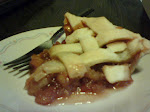
It is frequently cited that cotton candy, also known as spun sugar and candy floss, first appeared at the 1904 Louisiana Purchase Exposition in St. Louis, commonly known as the St. Louis World’s

Fair. This is not correct. At least 150 years earlier, in the mid-18th century, master confectioners in Europe and America hand-crafted spun sugar nests as Easter decorations and made webs of silver and gold spun sugar for elaborate dessert presentations. According to The Dictionary of American Food and Drink, the debut of the product we know as cotton candy took place in 1897 in Nashville. Candymakers William Morrison and John C. Wharton invented an electric machine that allowed crystallized sugar to be poured onto a heated spinning plate, pushed by centrifugal force through a series of tiny holes. In 1904, at the Louisiana Purchase Exposition, Morrison and Wharton sold the product, then known as “fairy floss,” in

cardboard boxes for 25 cents a serving. Though the price equaled half the admission to the fair itself, they sold 68,655 boxes! In those days, any colors and flavors used were natural. Since then, “food science” has substituted artificial colors and flavors in the cotton candy sold at fairs. Pure Confections may make the purest floss ever, using unrefined evaporated cane juice instead of refined sugar, plus natural colors, while modernizing the product with natural flavors that appeal to today’s palates. Some of the finest restaurants now serve cotton candy as part of the dessert experience. ~ Chef ~
 It is frequently cited that cotton candy, also known as spun sugar and candy floss, first appeared at the 1904 Louisiana Purchase Exposition in St. Louis, commonly known as the St. Louis World’s
It is frequently cited that cotton candy, also known as spun sugar and candy floss, first appeared at the 1904 Louisiana Purchase Exposition in St. Louis, commonly known as the St. Louis World’s Fair. This is not correct. At least 150 years earlier, in the mid-18th century, master confectioners in Europe and America hand-crafted spun sugar nests as Easter decorations and made webs of silver and gold spun sugar for elaborate dessert presentations. According to The Dictionary of American Food and Drink, the debut of the product we know as cotton candy took place in 1897 in Nashville. Candymakers William Morrison and John C. Wharton invented an electric machine that allowed crystallized sugar to be poured onto a heated spinning plate, pushed by centrifugal force through a series of tiny holes. In 1904, at the Louisiana Purchase Exposition, Morrison and Wharton sold the product, then known as “fairy floss,” in
Fair. This is not correct. At least 150 years earlier, in the mid-18th century, master confectioners in Europe and America hand-crafted spun sugar nests as Easter decorations and made webs of silver and gold spun sugar for elaborate dessert presentations. According to The Dictionary of American Food and Drink, the debut of the product we know as cotton candy took place in 1897 in Nashville. Candymakers William Morrison and John C. Wharton invented an electric machine that allowed crystallized sugar to be poured onto a heated spinning plate, pushed by centrifugal force through a series of tiny holes. In 1904, at the Louisiana Purchase Exposition, Morrison and Wharton sold the product, then known as “fairy floss,” in cardboard boxes for 25 cents a serving. Though the price equaled half the admission to the fair itself, they sold 68,655 boxes! In those days, any colors and flavors used were natural. Since then, “food science” has substituted artificial colors and flavors in the cotton candy sold at fairs. Pure Confections may make the purest floss ever, using unrefined evaporated cane juice instead of refined sugar, plus natural colors, while modernizing the product with natural flavors that appeal to today’s palates. Some of the finest restaurants now serve cotton candy as part of the dessert experience. ~ Chef ~
cardboard boxes for 25 cents a serving. Though the price equaled half the admission to the fair itself, they sold 68,655 boxes! In those days, any colors and flavors used were natural. Since then, “food science” has substituted artificial colors and flavors in the cotton candy sold at fairs. Pure Confections may make the purest floss ever, using unrefined evaporated cane juice instead of refined sugar, plus natural colors, while modernizing the product with natural flavors that appeal to today’s palates. Some of the finest restaurants now serve cotton candy as part of the dessert experience. ~ Chef ~









































